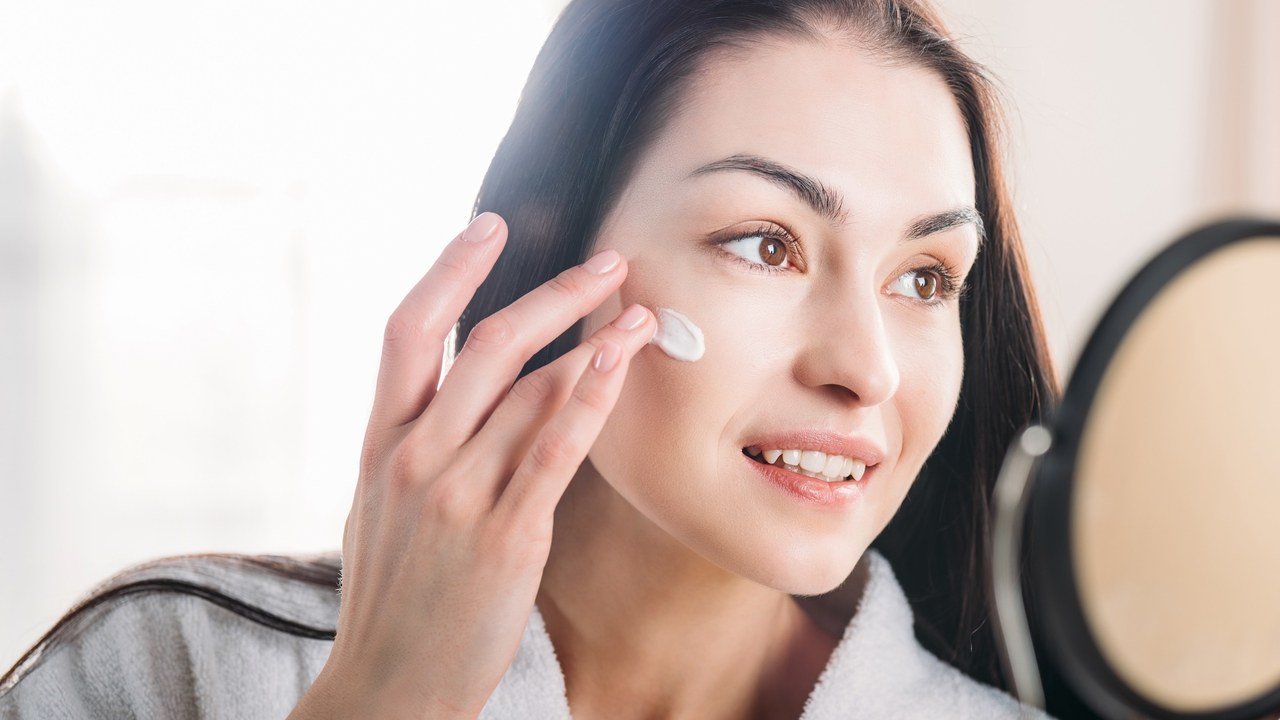
Chemical sunscreens are toxic for a variety of reasons and we always recommend our clients stick to a physical SPF daily to protect their skin. Heres why:
Hormone Disruption
A hormone is a chemical substance produced in the body that controls and regulates the activity of certain cells or organs. Hormones are essential for every activity of life, including the processes of digestion, metabolism, growth, reproduction and mood control.
Most chemical sunscreen filters are made up of small particles that are absorbed into the skin. Examples include oxybenzone, octinoxate, 4-MBC, octocrylene and homosalate. Some of these particles have even been found in plasma and urine. By contrast physical sunscreen ingredients like zinc oxide and titanium dioxide contain large particles that safely remain within the stratum corneum (outer dead layer of skin).
Dozens of studies in the last decade have examined the potential health hazards of small molecule sunscreen chemicals, including skin irritation or allergy, hormone disruption and skin damage that occurs when sunlight interacts with sunscreen chemicals (EWG: Environmental Working Group 2015). Many of these chemicals are known or suspected hormone disruptors, allergens and carcinogens.
Oxybenzone is part of the benzophenone family and EWG gives it a high hazard rating of 8/10. It penetrates the skin and has been found in mothers milk. Oxybenzone has been associated with skin allergies and is known to be a hormone disruptor. A study by the National Institute of Health (NIH) and the New York State Department of Health’s Wadsworth Centre found that men with high exposure to benzophenone UV filters had a 30% reduction in fertility.
The U.S Centres for Disease Control (CDC) detected oxybenzone in more than 97% of Americans based on a sample of more than 2500 adults and children. Even though oxybenzone has been linked to skin allergies, hormone disruption and cell damage, 80% of chemical sunscreens sold in the U.S and Canada contain oyxbenzone.
A study by researchers at UC Berkeley and Clinica de Salud del Valle Salinas has demonstrated how taking a 3 day break from various cosmetics can lead to a substantial drop in levels of hormone disrupting chemicals in the body. Oxybenzone fell by 36% and methyl/propyl parabens dropped by 44-45%.
Oxybenzone is also an emerging marine contaminant that poses a hazard to coral reef conservation. Once these chemicals are in the water, they actually decrease corals’ defences against bleaching, damaging their DNA and hurting their development.

Octinoxate, also know as octyl methoxycinnamate (OMC), is another small molecule chemical UV filter. Octinoxate has been given a hazard score of 6 by the EWG due to high concerns of biochemical or cellular level changes and endocrine disruption.
Octinoxate can be absorbed quickly through the skin and has been detected in urine, blood and breast milk. It is an endocrine disruptor that mimics oestrogen and can disrupt thyroid function.
Lifetime oestrogen exposure is a risk factor for developing certain types of cancers in women, including breast cancer. In an article published in Environmental Health Perspectives, octinoxate was shown to increase cell proliferation (when cells multiply rapidly) in MCF-7 breast cancer cells. Octinoxate may also have thyroid disrupting properties. The thyroid gland is part of the body’s metabolism system.
A reduction of sperm count has also been shown in offspring of those who were exposed to octinoxate. In addition, results of the Danish study presented in Endocrine Society’s 98th annual meeting in Boston in 2016 showed that the following UV filters disrupt sperm cell function; avobenzone, homosalate, meradimate, octisalate, octinoxate, octocrylene, oxybenzone and padimate O. These chemicals are common ingredients in sunscreens.

Photostability is a term that describes how slowly (or quicky) the UV protection of a sunscreen filter or product will break down due to exposure to UV radiation. Sunscreen filters fall into two categories physical and chemical.
Physcial filters (zinc oxide and titanium dioxide) are the most stable and maintain their ability to filter UV rays even when they are exposed to these rays. Physical filters sit on top of the skin and reflect and scatter UV radiation rather than absorbing it, thereby remaining intact. Think of physical sunscreen like a shield on top of the skin.
Chemical filters (like those listed above) penetrate into the skin and absorb UV radiation converting it to heat energy. Chemical filters are changed by UV radiation in this process. Not only does the UV protection they provide decrease but their chemical composition also changes releasing free radicals as a result. This is one for the reasons for the suggestion that some chemical sunscreens may cause cancer. You may remember from our previous article on free radicals that they cause premature ageing. Therefore it is possible that the free radicals released by the degradation of chemical filters could also contribute to the ageing process.
 The data shows that when oxtinoxate, oxybenzone and oxtocrylene penetrate into the nucleated laters of the skin the level of reactive oxygen species (ROS) increases above that produced naturally by the epidermal chromophores under UV illumination. This study suggests that chemical filters actually cause MORE ageing than you would naturally have under UV rays.
The data shows that when oxtinoxate, oxybenzone and oxtocrylene penetrate into the nucleated laters of the skin the level of reactive oxygen species (ROS) increases above that produced naturally by the epidermal chromophores under UV illumination. This study suggests that chemical filters actually cause MORE ageing than you would naturally have under UV rays.
Since chemical filters erode so quickly, the FDA (Food and Drug Administration) and AAD (American Academy of Dermatology) recommend that sunscreens be reapplied every 2 hours. However, physical filters might not erode at all in 2 hours, provide much longer lasting protection and have to be reapplied less often.
Even though frequent application is necessary for chemical filters, unfortunately this means there is an increased exposure to the chemicals present and the effects of the chemicals on the skin is increased.

